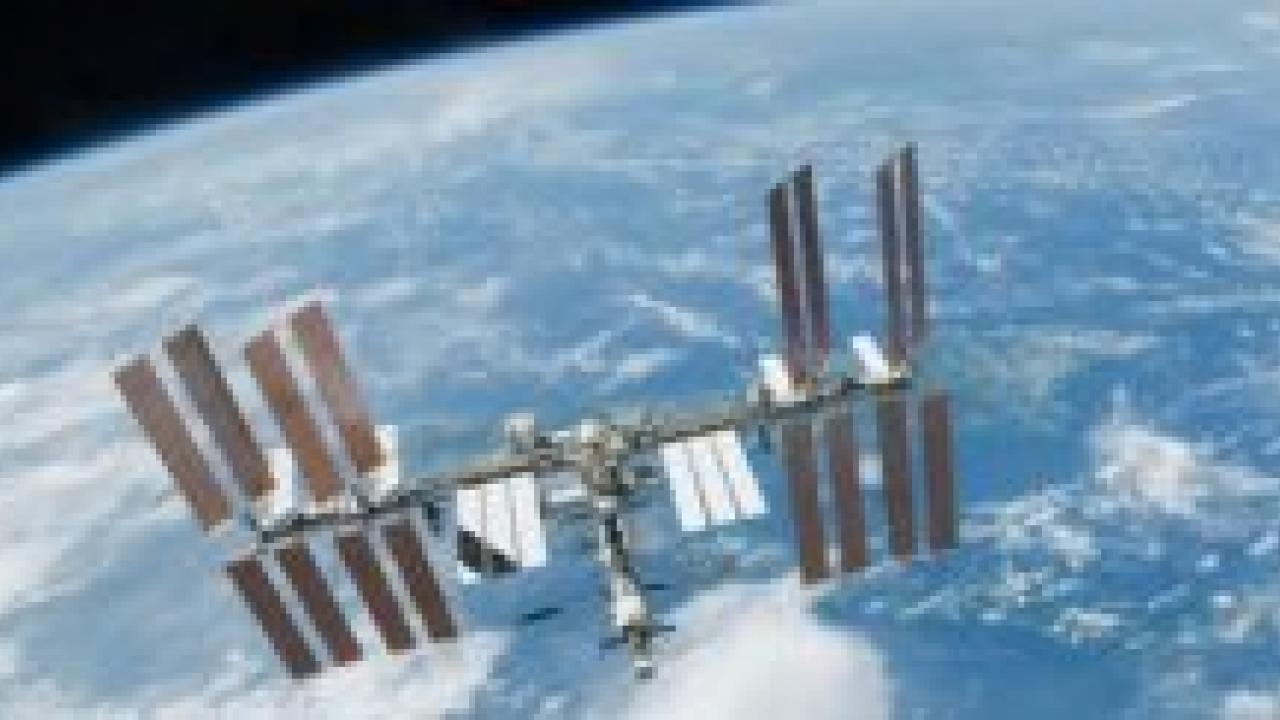
One Place Like Home: Space Station Has Same Microbes as Your House
By Carol Gan
UC Davis microbiologists have analyzed swabs taken by astronauts on the International Space Station – and found pretty much the same types of microbes as in a home on Earth, according to an analysis published today (Dec. 5) in the journal PeerJ.
Citizen science and Project MERCURRI
The work was part of Project MERCCURI, a collaboration between UC Davis and other organizations including Science Cheerleader, a group of current and former professional cheerleaders pursuing careers in science and math.
Previously, the Project MERCCURI team sent 48 bacterial samples collected on Earth to the ISS to see which (if any) grew better in space. Additionally, astronauts swabbed 15 locations on the space station and sent the samples back to Earth to be analyzed. The researchers compared the microbes found on the ISS to published data including the “Wildlife of Our Homes” study and surveys of human body sites from the Human Microbiome Project.
Not more “gross” than bacteria at home
“So ‘is it gross?’ and ‘will you see microbes from space?’ are probably the two most common questions we get about this work,” said author David Coil, a microbiologist in the Department of Medical Microbiology and Immunology at UC Davis School of Medicine. “As to the first, we are completely surrounded by mostly harmless microbes on Earth, and we see a broadly similar microbial community on the ISS. So it’s probably no more or less gross than your living room.”
Regarding finding microbes from space, “Since the ISS is completely enclosed, the microbes inside the station come from the people on the ISS and the supplies sent to them,” he said.
“The microbiome on the surfaces on the ISS looks very much like the surfaces of its inhabitants, which is not surprising, given that they are the primary source,” said Jenna Lang, a former postdoctoral scholar at UC Davis and lead author on the study. “We were also pleased to see is that the diversity was fairly high, indicating that it did not look like a ‘sick’ microbial community.”
Microbiology of buildings
The ISS can act as a model system for studying microbes in buildings, said Jonathan Eisen, professor in medical microbiology and immunology, evolution and ecology and at the UC Davis Genome Center.
“The key reason it is a good model is that the inputs of microbes into it are very restricted. Thus we can learn about what role inputs (e.g., windows, water, people, dogs) have in developing the built environment microbiome by comparing to the ISS,” Eisen said.
The microbiology of buildings is a big interest in Eisen’s lab, a part of the microBEnet network. Selecting the ISS as part of Project MERCCURI was also a great way to drive public interest in the project, he added.
Project MERCCURI was coordinated by Science Cheerleader, SciStarter and UC Davis, in conjunction with the Argonne National Laboratory. The project was supported by funds provided by Space Florida, NanoRacks, and the Alfred P. Sloan Foundation.
This story originally appeared on the Egghead Blog.
More information
Read the paper (PeerJ)
UC Davis researchers collaborate on census of microbial life on the International Space Station (news release)
MicroBEnet: The microbiology of the built environment network
Cheering Microbes Into Space (news release)
Adapted from a news release by Carole Gan, UC Davis Health Public Affairs.
Original article at the College of Biological Sciences.